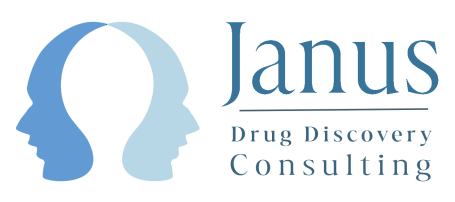TPD meeting - day 2. Over to the biotech folks to show us how to make TPD drugs
29th October 2024

Day 2 of the TPD meeting saw the biotech industry folks to the fore. Monday we saw the academics helping to unpick the basic science and now it’s on to the drug discovery teams who turn these ideas into clinical projects and patient impact – and they seem to be doing a pretty good job of it so far. Indeed the number of TPD biotechs continues to grow – I think I mentioned a figure of around 90 to a few folks (this is biotechs where TPD is their main or only approach – if I also included pharma, CROs and biotechs with a TPD project buried in their portfolio, you could easily double or treble this figure). However, my guess of “about 90” seems have been repeated in quite a few places so I think I need to check and update my list and post on that soon – watch this space.
The day kicked off with a lineup of CEOs from most of the public, first wave TPD biotechs with John Houston (Arvinas), Nello Mainolfo (Kymera), Adrian Gottschalk (Foghorn), Andrew Hirsch (C4) & Arthus Sands (Nurix) all sharing their perspectives on the state of their own pipelines and the sector as a whole.
Nello had some good insight around target choice (“that’s where companies live and die”) and why TPD’s ability to fully saturate blockade of immune signalling makes it a better approach than eg small molecules or biologics. Certainly, Kymera’s STAT6 work is hotly anticipated as an approach into undruggable areas.
John then reflected on the new problem (for TPD companies at least) of building a sales force for the commercial launch of their ER PROTAC (2025, fingers crossed) – a nice problem to have which seemed a long way off a few years back. Arvinas also continue to be committed to the big CNS targets (tau, a-synuclein etc) though John admitted it has been tough to get good degraders into the CNS but things are now falling into place off the back of their clinical LRRK2 programme. Neuro could be the next great frontier for TPD though John also cautioned that you need good investments in target ID work to enable some of these – a very salient point.
It's still notable that biotech has been responsible for putting the vast majority of TPD agents into the clinic recently, often under a fair deal of VC pressure - Adrian voiced what many in biotech feel “All timelines are wrong but some are useful…”. But when agents get to the clinic, efficacy & safety continues to impress: good response rates, low levels of safety discontinuations or dose reductions – so far so good.
Both Andrew & Arthur noted how degrader antibody conjugates (DACs) could open up new avenues and they’re investing here now, especially via collaboration. It’s certainly a better approach than cell-specific E3s as I’ve said before though you do need very potent degraders for use in DACs – probably very fast and/or 0.1nM DC50 or better would be my estimate.
After the CEOs came a useful discussion about PROTAC safety, with great input from Stephanie Leuenroth-Quinn (FDA) and others. It’s clear the agency is still learning how best to understand TPD drugs though Stephanie reiterated that they are assessed in the usual small molecule framework though perhaps with a few extra considerations. Although we’re getting better at reducing or removing the hook effect from most PROTAC candidates (a non-issue with glues of course), we do need to watch that, at very high safety doses, we don’t switch from degradation to inhibition, if we can get exposure high enough of course. If several dose levels are used this should be manageable.
Onto the TPD biotech presentations, Stew Fisher (outgoing CSO at C4, from organic chemist to organic farmer – you’ll be missed Stew) gave a beautiful series of stories on how a deep understanding of quantitative PK-PD has allowed good prediction of clinical responses for both PROTACs and glues. TPD is all about kinetics: in vivo is where degradation kinetics meets pharmaco-kinetics (like “kinetics squared”!) so this is an area it’s worth investing in to help drug design if you can – in particular to figure out if it’s better to increase speed of degradation or drug exposure to give you the bigger boost in in vivo efficacy. Stew also noted that kinetic parameters calculated in tumor cells in vitro generally translates to xenograft kinetics which is useful.
Peggy Scherle (Prelude) covered three different flavours of SMARCA family degraders, all using ligands non-selective between SMARCA 2 & 4 but where a PROTAC approach allows introduction of good degradation selectivity. As well as a lead iv-dosed SMARCA2-selective PROTAC based on VHL which shows a high volume of distribution in vivo suitable for once weekly dosing, Prelude also have an oral (CRBN-based unsurprisingly) SMARCA2-selective with a low volume for once daily dosing. Both dosing regimens give sustained target degradation in vivo though higher selectivity over SMARCA4 was needed for the qd oral candidate to avoid unwanted degradation of this target relative to the iv route where 40 fold selectivity was sufficient to give acceptable in vivo selectivity. Interestingly the longer half-life of SMARCA2 (72h vs ~24h for SMARCA4) also makes it easier to widen the selectivity window (longer half-life proteins are generally easier to degrade). Both are now in the clinic so I guess we’ll see which has the better profile to go to phase II and beyond.
It's known that dual SMARCA2/4 degraders are associated with poorer in vivo tolerability but to avoid this issue, Prelude have also hooked up a non-selective SMARCA2/4 PROTAC to a TROP2 antibody in a DAC construct to show ~100 fold more potent cytotoxicity in TROP2+ve cells relative to -ve. Although this gave better efficacy than a traditional toxin-based ADC, they did note that the potency (DC50 0.7nM) will likely need to be increased further to get to a suitable candidate profile, underlying that really high potency is often needed for degraders to be useful in DACs due to the limited amount of payload which can be delivered.
Finally, JF Brazeau (Plexium) showed a neat use of their bead-based DNA-encoded library work to find glues for CDK2. This important kinase is a real tough cookie to crack using traditional ATP site inhibitors due to the high active site homology with related kinases including the key cell cycle kinase CDK1 which you really don’t want to hit.
Using credit card-sized picowell plates with up to 88000 wells, Plexium are able to build CRBN-based libraries of glues on beads (with usual DNA barcoding to track what compound is loaded on the bead) which contain photocleavable linkers. The beads are arrayed one per well then photolyzed to liberate a single free compound per well. After cells are added, a multiplex system allows tracking of CDK1 & CDK2 degradation simultaneously so image analysis can quickly track which wells show selective degradation of the desired target.
Off-DNA synthesis allows confirmation of activity and showed some useful, selective hits. Some also carried some GSPT1 degradation activity which you probably want to design away from but the team were quickly able to do this to give good leads. Cryo structures nicely show how the CDK2 glues bind on completely the opposite side of the kinase to the ATP pocket, a great demonstration of how glues can bypass many issues of traditional kinase inhibitor design.
More great talks on Wednesday – stay tuned.
We need your consent to load the translations
We use a third-party service to translate the website content that may collect data about your activity. Please review the details in the privacy policy and accept the service to view the translations.

